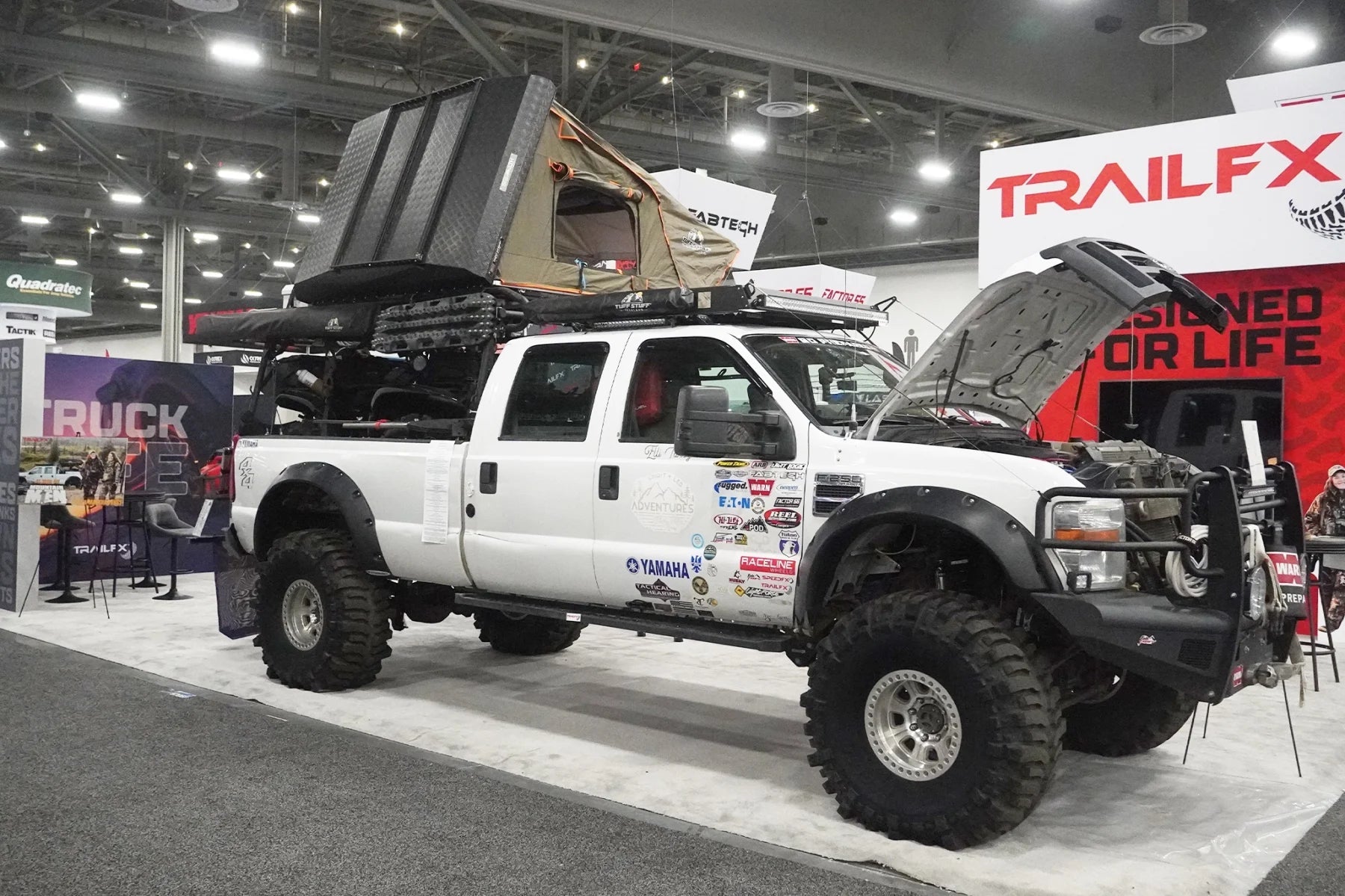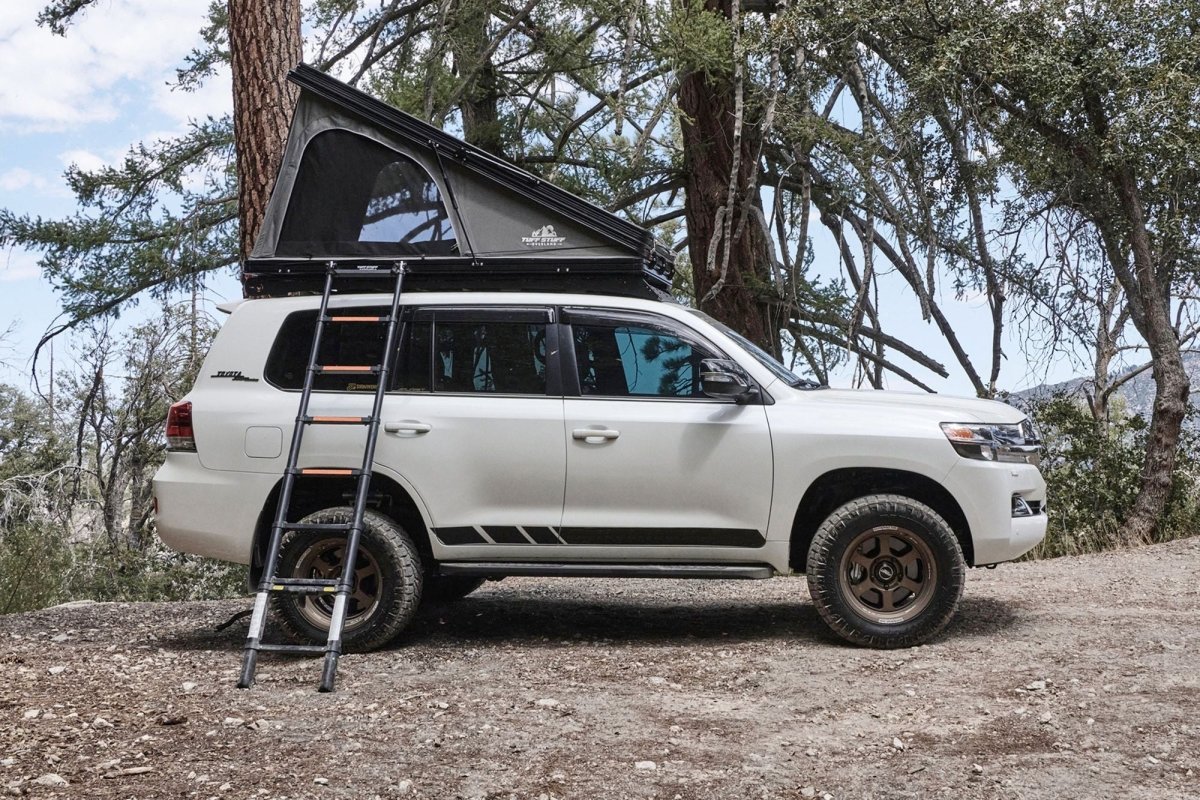Looking for overland trails takes away half the fun of planning an overland trip when you do not know where you should start looking. This can be especially difficult if you are new to the camping scene and did not anticipate the effort required to map out a suitable path for a successful overlanding trip. Perhaps you didn't even know you needed to find the trails before starting your ignition!
Regardless of experience level, we can all agree that looking for overlanding trails can be hectic. Below, we have highlighted the best ways to find routes for your next overlanding trip.
Seeing The World On Wheels
The thought of exploring nature outside the grip of civilization is enough to make anyone over the top with excitement. The idea of being armed with nothing but a capable vehicle, a map of trails, and survival kits to last the duration of your trip, as you venture into frequently unexplored parts of nature sounds like something straight out of a movie. However, overlanding is real, and it is more fulfilling than you might imagine.
But What is Overlanding, and Why Does it Matter?
Overlanding is a way of seeing the world on wheels. It is a self-reliant adventure to remote destinations where the trip's aim is the journey.
Does that mean overlanding is a type of road trip?
Hardly.
Overlanding is a vehicle-dependent journey whose primary goal is the thrill of the journey itself. It is often confused with other outdoor adventures like off-roading and road-tripping because it involves traveling long distances in a vehicle. However, the primary goal- which is the journey itself- is what sets overlanding apart from other outdoor activities.
When you go overlanding, you do so to see the world. The aim of your journey is not to arrive at a campsite where you will stay for a few days before returning home. The objective is to cover a long distance in a remote area and make memories as you go.
Likewise, you live in your vehicle, along with the rest of your overland gear and equipment, which form your survival kit. You are not privy to the luxuries that camping offers, like water hookups. Because your adventure is based in remote areas away from civilization, you must adopt a nomadic lifestyle and survive on your little resources.
Although this might sound like a lot of work, these are the joys that overlanders look forward to experiencing. They look forward to these expeditions that bring them closer to nature than they already are.
Because you will be far from home when overlanding, it is essential to prepare and thoroughly plan every aspect of your trip. It will help if you account for every factor, like feeding, cleaning, and, of course, the trails you want to travel on before getting on the road.
Putting together a survival kit is the easy part, even as a novice. The more challenging part is figuring out what paths you want to follow.

Finding Overlanding Trails For Your Next Trip
No doubt that when you first heard about overlanding, you probably thought it was an unplanned trip taken on a whim. However, like any other outdoor activity, overspending requires careful planning of the routes and trails to be explored. This will go a long way in keeping you out of unfortunate occurrences (like getting lost in the backcountry).
Overlanding is usually done on on-road or off-road trails or routes. Regardless of which of the two you choose, overlanding is generally done away from civilization. This means without thorough preparation, you will most likely get lost in a place where you cannot simply stop someone on the road and ask for directions. This also means if you get in trouble, you can only depend on yourself to get out of the sticky situation you find yourself in.
Finding overlanding trails is essential in putting together a plan for your overlanding trip. It gives you an idea of how long the journey will take, what weather you should prepare for, and what terrains or landscapes you should plan for.
Some easy ways you can find overland trails are:
1. Google
We instinctively go on google for help when we need any information. It doesn't matter if it's a recipe, symptoms, music lyrics, or the answer to an English test, we use google to find random bits of information that are pretty helpful. So, why not use google to find a trail near you (as you would look for a restaurant near you)?
A quick trail search using the Google search bar will turn up hundreds of information on trails in the area you are interested in. Google siphons information from other websites and will undoubtedly link you to tons of websites that have helpful information on trails for your next overlanding trip.
Google also has Google Maps and Google Earth, resources that are especially useful when you are scouring the internet for exciting trails you can travel on. With google map and google earth, you can explore map views and satellite images of the trails you are interested in. However, when it comes to the full-package 3D experience, Google Earth is the better candidate.
By utilizing Google and its resources, you can explore trails, landscapes, and the neighboring areas with ease.
2. Use Free Websites
The internet is a goldmine of information as long as you know where to look. Tons of free open-source websites offer information and engaging content on overlanding. Sometimes, the pointers you need to find a trail for your next overlanding trip might be on a free website.
These free websites can usually be found by using the google search engine. As previously mentioned, Google draws helpful information from the billions of existing websites. By inputting keywords like the location you want to go overlanding in, you can find helpful websites.
Of course, nothing is perfect. There are upsides and downsides to using free websites to research overland trails.
The most apparent two-edged sword is the fact that open websites are a community of random people with different information. While some of this information regarding the trails and the areas may be accurate, some may be exaggerated, false, or obsolete. Unfortunately, the only way to confirm which information is accurate and which is false is by conducting further research.
3. Paid Websites
Paid websites offer overland trail information like free websites do. However, to get the information from these paid websites, you need to spare a few coins.
Paid websites may be more expensive than free ones, but they offer more accurate information. The information on their pages is more organized than the disorganized flurry of information on free websites.
With paid websites, you get in-depth descriptions of trails you want to visit. Many paid websites offer trail locations, opening seasons, accommodation, weather, permit needs, and primitive-level information so you are fully prepared for your journey.
4. Forums
Forums are a rich source of information when it comes to finding an overland camping trail. On forums, you can ask questions and have numerous people make contributions and offer valuable information that will be useful for planning your overland routes. In fact, on the right website, forums can be convenient and hold all the answers you need.
One major problem you might encounter while using forums is how to know which information is legit. It can also be challenging to sift through irrelevant information to find useful ones.
5. Governmental Websites
If you can't trust other websites, you can trust the trail information on governmental websites. Most governmental bodies, especially in the United States, have websites that provide information about specific nature locations. This includes but is not limited to National reserves and the Bureau of Land Management owned lands.
Governmental websites help get accurate information about specific camping locations and off-roading and overlanding trails. Governmental websites offer essential information like the condition of the trails, camping options, and directions. They also provide the rules and regulations of the trail you are traveling on so that you are fully prepared for your trip.
Some resourceful governmental websites include the Bureau of Land Management website and the U.S. Department of Agriculture Forest Service website.

6. Apps
Technology has advanced and brought modern solutions to us. One of these handy solutions is the creation of apps dedicated to offering solely overlanding information, such as finding trails. These apps make it possible to step up the overland route-planning process by dropping information right in your laps or, rather, on your screens.
Different apps promise to make your overland planning process easier. However, you should ensure you should only pick the most genuine ones.
There are free overland apps, and there are also paid ones. Regardless, some of the best overland apps include:
- Gaia GPS
- iOverlander
- Recreation.gov
- iNaturalist
7. Paper Maps
Who says paper maps are only helpful for pirates hunting for treasure? If you can read maps, you can print out or borrow paper maps that can direct you down the necessary routes.
Not only do paper maps offer clear directions, but they also ramp up the nomadic experience. After all, what's more nomadic than venturing into remote locations armed with nothing but paper maps?
Paper maps are not only handy for discovering overlapping trails but also when you're traveling on the trails. An excellent map is the National Geographic Free Topo Maps.
8. Ask a Park Ranger
Rangers are the experts that are familiar with the remote area where they work. They know the state of the trails, what vehicles should be used to visit, where the trails are, and how to get there. If there is anyone that can help you, it is a Forest Ranger.
The United States Forest Service (USFS) is responsible for maintaining public government lands such as National Forests. To do this, they have Ranger stations.
You can visit or call the ranger offices in the location you want for more information about the trails in the area. Forest rangers, for example, are often armed with maps, pictures, and even videos of trails in the Forest. With this information, they can tell you what trails are best for your vehicle and help you plan your overlanding routes, so you are not caught in a sticky situation.
9. Ask the Locals
Sometimes, residents of an area have more knowledge about the area than anyone else. In small towns where trails are not accounted for on the internet, on any website, or in any forum, the best bet is to ask someone- or people- who is familiar with the area.
Locals know the ins and outs of their area and often offer helpful information like how to find the trails, where the routes lead, how long the drive is expected to take, and the current state of the road.
For more up-to-date information, you can also look for local truck drivers or overlanders. Because they spend so much time on the road, they will undoubtedly be familiar with the area and give you the necessary information.
10. Join an Overlanding Community
What better way to find overlanding trails than to ask people with a similar interest? Overlanding communities and tight-knit overlanding groups aid group discovery of essential overlanding information. This is a great way to amass knowledge from different opinions about overlanding.
In an overland community, it will be easier to discover trails by asking community members. When no one has an idea about the routes that you are interested in, there will be more people willing to do the research for you.
Who knows? You might even make an overland buddy in your community!
Exploring Nature The Overland Way
Going on an overlanding trip is fun, but it requires detailed planning. Figuring out what routes you should travel on is one of the many planning processes.
Finding a trail in an area, you are not familiar with becomes challenging when you do not have the right resources. However, with our tips, it should be easier to find an overland trail for your next adventure!



